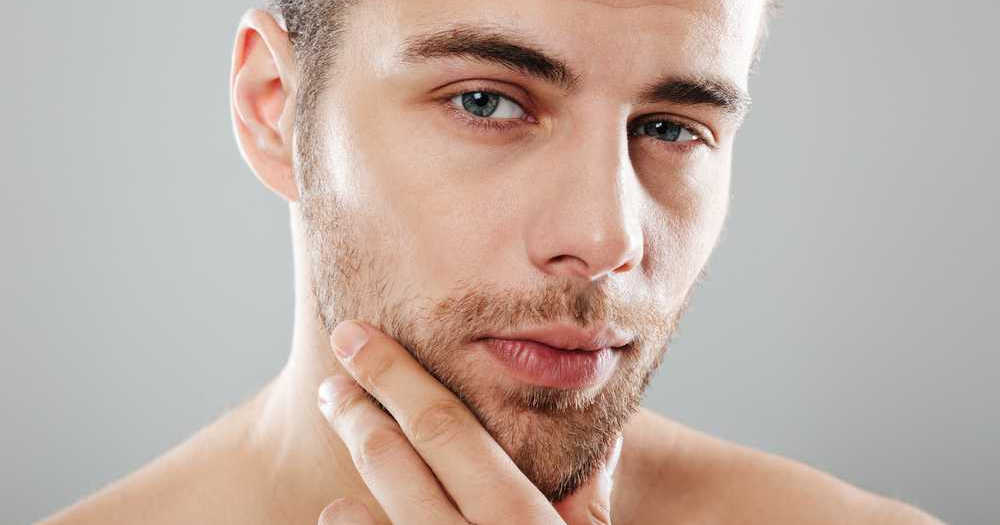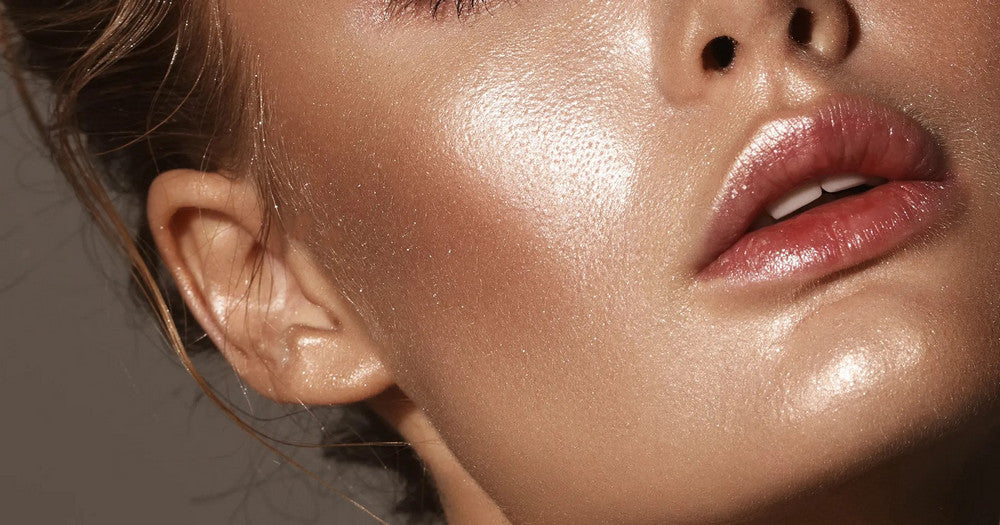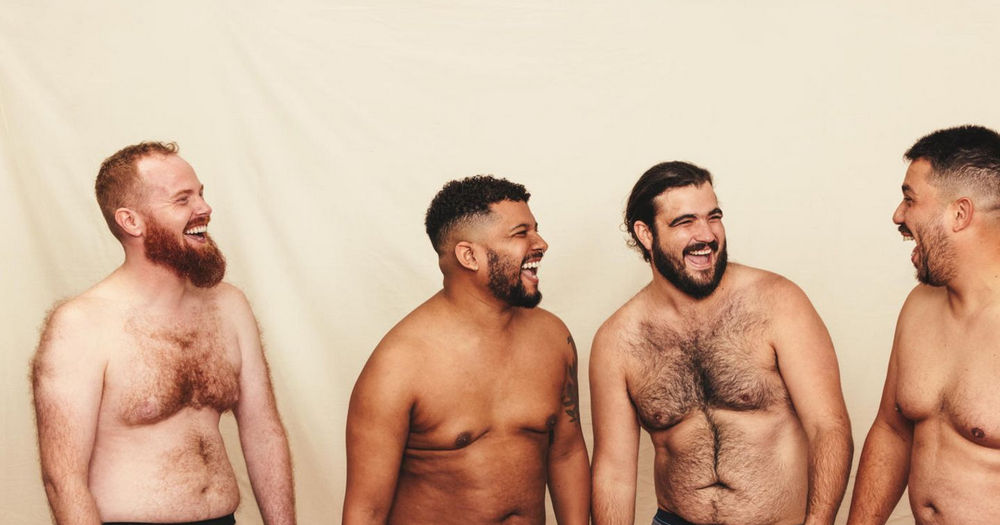While a jet black or dark brown beard looks masculine and boosts a man's self-confidence, a blonde beard can make men suffer, as it makes even grown men look like they are going through puberty.
For people with blonde hair, fair skin, and blue eyes, growing a blonde beard is natural. But as a dark-haired guy, do you wonder why your facial hair is blonde? Why you have different hair colors in your beard that make it look like it's growing in different patches and that affect your self-esteem as a man?
If your answer is yes, it's time to stop worrying. Let's find out what is the reason for the unusual growth of blonde hair in your beard and how to get it under control.
Table of contents:
- Part 1: Why is my facial hair blonde?
- Part 2: Is blonde facial hair normal?
- Part 3: Getting Blonde Facial Hair Under Control
- Part 4: Conclusion
Why is my facial hair blonde?
Knowing the factors that cause your facial hair to turn blonde will help you get an idea about what kind of treatment technique is suitable for it. So, here are the reasons that will help you figure out “why is my facial hair blonde”.
-
Genetic factors
Two genetic factors determine the hair color on your face and head. These are the following:
family history
Have you noticed how much our facial features resemble our parents, grandparents, and even other ancestors in our family tree? Your facial features and hair color are the result of a genetic combination from your father's and mother's side of the family.
So if people in your extended family had blonde facial hair, it's likely that you have similar genetic combinations to them, resulting in a light beard.
inheritance patterns
There is a single gene that determines the pigmentation of the hair on your body. It is the MC1R gene, which influences the color of facial hair by producing melanin, a pigment that gives facial hair a certain color.
Although the gene affects all hair follicles equally, a mutation in this gene can cause you to have blonde hair on your face while your head hair is dark.
-
Hormonal influence
One of the most important factors that determine how much, how coarse, how thick and what color your beard will grow is the hormone levels and their balance in your body.
How Hormones Influence Facial Hair Color
Hormones control the melanin content in hair. This is because these hormones stimulate the production of eumelanin, and eumelanin in turn causes hair to become dark. The hormones involved include:
- testosterone
- progesterone
- estrogen
- cortisol
So high levels of cortisol and other hormones can give you a dark beard, while lower levels can be the reason your beard is blonde.
How puberty affects hormones and thus beard color
Androgen levels are low before puberty, resulting in light hair color. However, when men reach puberty, hormone levels peak and blonde hair darkens. However, this is not always the case, as hair can also lighten with age as the distribution of melanin in the hair decreases.
-
environmental and lifestyle factors
Below are some environmental and lifestyle factors that can cause facial hair discoloration.
sun exposure
While sunlight and thus UV radiation darkens the skin color by increasing the release of melanin from melanocytes, the opposite is true for the melanin in hair.
UV radiation causes the melanin molecules in the hair to break down. As a result, the hair becomes blonde.
nutrition and nutrients
A healthy diet is also important for the health and color of the hair. A lack of nutrients such as minerals and vitamins in the diet leads to a reduced formation of hair pigment in the hair follicles.
The vitamins and minerals involved in maintaining hair health include:
- vitamin E
- vitamin D
- vitamin B complex
- zinc
- copper
stress
Finally, physical or psychological stress can also cause the graying or lightening of beard hair. First of all, stress affects the hormone levels in the body, which affect melanin production.
Stress also increases the level of oxidants in the blood. These oxidants break down melanin and make the beard hair blonde.
-
The Role of Melanin and Pigmentation
You've probably noticed that melanin, regardless of the indirect factor, directly influences hair pigmentation, so let's talk about its role here.
There are 2 types of melanin, the balance of which determines the color of the beard hair. These are eumelanin and pheomelanin. Eumelanin gives the beard a dark color, which can be brown or black.
On the other hand, pheomelanin lightens the beard hair color, making it light brown, red or blonde. As mentioned above, the quality and production of eumelanin and pheomelanin are influenced by genetics, lifestyle and hormones.
Is blonde facial hair normal?
We hope you have found your answer to the question "Why do I have blonde hair in my beard?" Now let's find out if other people have blonde beards or if you are the exception.
Normal frequency and fluctuations
Although the most common color of facial hair around the world is black or dark brown, and some people also have red or reddish beards, blonde facial hair is not commonly seen.
However, depending on your ethnicity and genes, it is not uncommon to have blonde facial hair. You can also find some variations of facial hair here.
- Dark head hair with blond beard
- Patches of blond and red hair in the beard
- Light brown hair with brown beard
- Dark hair in childhood and blonde facial hair in adulthood
- Blonde facial hair in childhood and dark in adulthood
When it is not normal
If your ancestors had blonde hair, you can have it too. However, there are some cases where blonde hair indicates a health problem and could be the reason for the question "why is my mustache blonde".
- Albinos have blonde facial hair due to the lack of pigment
- Stress, an unhealthy lifestyle and a lack of nutrients in the diet can lead to light facial hair
- An imbalance of hormones also leads to blonde facial hair
- If an area of facial hair is frequently exposed to the sun, that area will become lighter compared to other facial hair
Getting Blonde Facial Hair Under Control
Now that you know the causes and prevalence of blonde facial hair, you must be aware that factors other than lifestyle are out of your control.
That's why you'll learn here how you can get unwanted blonde facial hair under control yourself.
Welcome the blonde facial hair
The first thing you can do to get a grip on blonde hair is to not do anything about the light patches in a full beard. Instead, tell yourself that you are unique and your light beard is too.
When everyone in the crowd has the same typical brown or black beard, it's not a bad idea to stand out with your blonde facial hair. You can be yourself and be proud of your natural color by acknowledging the beauty of your blonde beard.
Also, having a full and thick beard, no matter what color it is, will make it easier for you to accept your unusual hair. To do this, you should take good care of your beard with high-quality beard care products and style it so that it looks attractive on your face.
Dye the blonde facial hair
Even though you can show off your natural blonde beard, it's not a bad idea to wonder how brown/black facial hair that matches your head hair would look on you. So if you want to have a dark beard every now and then, you can simply dye it.
When dyeing your facial hair, there are a few things you should keep in mind to ensure your dyeing experience doesn't end in chaos.
- Use a dye specifically made for facial hair
- Apply an even layer of dye to facial hair
- Follow the pre- and post-care routine
removal of blonde facial hair
And last but not least, if you don't want to accept your blonde beard and would rather have a clean shave than a beard with different colored hairs, you can get rid of the beard completely. To do this, you can shave your facial hair. But the regrowth of hair, especially blonde hair, might worry you, right?
We therefore recommend semi-permanent facial hair removal with the Ulike Air 10 IPL hair removal handheld device. In the past, IPL devices were ineffective for light hair colors such as red, gray and blonde hair . However, the modern technology of the Ulike Air 10 makes it possible to remove blonde facial hair perfectly.
Conclusion
Blonde beard hair is caused by a combination of reversible and irreversible factors. Reversible factors include environmental and lifestyle changes, while genes and hormones are out of your control.
Although a few light streaks in your beard or even a full blonde beard might affect your self-esteem, we're here to tell you that this is totally normal. You can look really good with light beard hair if you style it right.
But to look good with blonde facial hair, you have to fully embrace it. And you don't necessarily have to have a blonde beard, because you can also dye it or shave it.



























